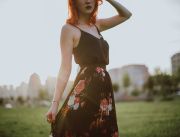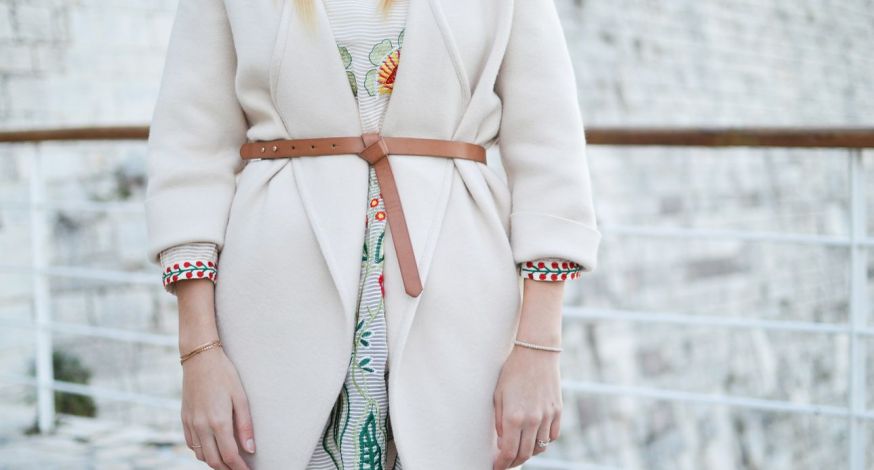Previous Post

Tips to Wear a Bomber Jacket with a Blouson Dress

The right belt can complete an ensemble, establish a uniform, or stand out on its own.
If you're looking to keep your pants in place, a belt is the fashion accessory for you. Belts are useful in many ways, from holding up pants to keeping in your pants' tucks to adding a pop of colour to an otherwise monochromatic ensemble. Therefore, they are adjustable and available in a wide range of designs. Belts have holes in the tongue of the belt so that the buckle's cinch can be adjusted to the desired tightness. For both formal and casual attire, belts are a must-have accessory.
A high-quality belt will serve you for many years. You should go out and buy a few belts that you like and then try to wear them in the ways described here.
Belts are typically measured in inches, and the ideal size is one that perfectly fits around your waist. Put on some pants that you think will go well with this belt, and head out to the store.
To find the perfect belt for your occasion and desired level of comfort, it is recommended that you try on several different styles in the fitting room.
Pull your pants or shorts up to your waist, buckle your belt, and tuck your shirt in. Don't tuck in your shirt if you're going for a laid-back look.
Many pants have a looped waistband. Thread the tongue of the belt through each of the notches until you've completed the circuit.
Once the belt is around your waist, thread the end through the buckle and adjust the tension to your liking.
Test out some new tricks to see if they help you develop your own sense of style and give your wardrobe a more current vibe.
Wearing a wide belt to cinch in a long blazer can make the waist the focal point of your outfit. With a longer blazer, you can create a one-of-a-kind silhouette by wrapping a wider belt around it and securing it in the middle.
Belts, which are worn about midway up the body, can be the focus of an outfit or serve as a finishing touch. The belt's colour, fabric, or pattern can serve as a starting point for accessorising with shoes, a pocket square, or even jewellery.
Belts are most commonly worn through the loops on a pair of pants, but they can also be worn around the waist as a way to emphasise curves or add a splash of colour that stands out against a more subdued outfit.
Chinos are typically offered in subdued tones such as beige, olive, and khaki, and look great with brown belts.
You shouldn't be able to slip your belt through the loops. The belt loop should be the perfect size for your belt. A thin belt will hang loosely through a wide loop, but a thick belt will be uncomfortable through a small opening. Determine your waist size and shop for a belt that complements your ensemble.
Belts are an accessory that can be updated with the seasons along with the rest of your wardrobe. Leather belts are more stylish in the cooler months, but cloth belts are more practical in the warmer months.
Belts can be worn to almost any occasion. Some common belt designs include the ones below:
These belts are typically worn with suits or dress pants for more formal occasions. The formal belt known as a cumberbund is typically worn with a tuxedo or suit. Pleated fabric is used to create this belt. Although suede belts are often associated with business casual attire, a high-quality belt can also be worn with a suit. These belts are of a higher quality, so extra care must be taken to prevent fraying by storing them in a suitable manner.
Leather belts are used to hold up pants and typically come in either black or brown. Belts are typically made from cowhide (full-grain leather or calfskin), but faux leather options are also available for vegans. Leather belts can be dressed up or down depending on the occasion. A leather cleaner can be used to care for genuine leather belts. If you wear your belt frequently, you should clean it with the solution twice a year and let it dry overnight so that every time you wear it, it feels like you're putting on a brand new belt.
A "braided belt" is a belt that has been constructed by braiding together multiple strips of leather. Although they are appropriate for formal occasions, most people associate them with more casual attire.
To prevent garters or thigh-high socks from sliding down your legs, you can wear a garter belt as a piece of lingerie.
Most people wear a metal chain belt around their hips or waist as a fashion accessory.
Reversible belts can be worn "inside out" or "right side up," depending on the situation. Belts that can be worn either way often have one side that is a different design or colour. A belt's buckle, for instance, may be black on one side and brown on the other.
Slim belts are typically made of leather and can be worn with both jeans and suits. They are more commonly worn as waist belts to display body shape than for their actual function.
Canvas belts were once standard issue for the military. These military belts are superior to leather belts in that they allow for greater freedom of movement while still keeping pants securely fastened around the waist. Canvas belts typically incorporate a blend of linen and cotton or synthetic webbing. No metal buckle is included with these belts. They use a plastic fastener that mimics a seat belt instead.
Belts with studding feature straps embellished with metal or plastic grommets, studs, or rhinestones. The result is a belt with texture and substance where there would have been none before.
Western belts, traditionally worn by cowboys, are made of sturdy leather and are designed to keep a rider's pants in place. Large, silver, engraved buckles and elaborately embossed leather straps set western belts apart as trendy fashion accessories.
Gallemen collects & utilizes cookies from third-parties & affiliate networks to improve user experience. If you buy a product or service after clicking on one of our links, we may get a commission.
